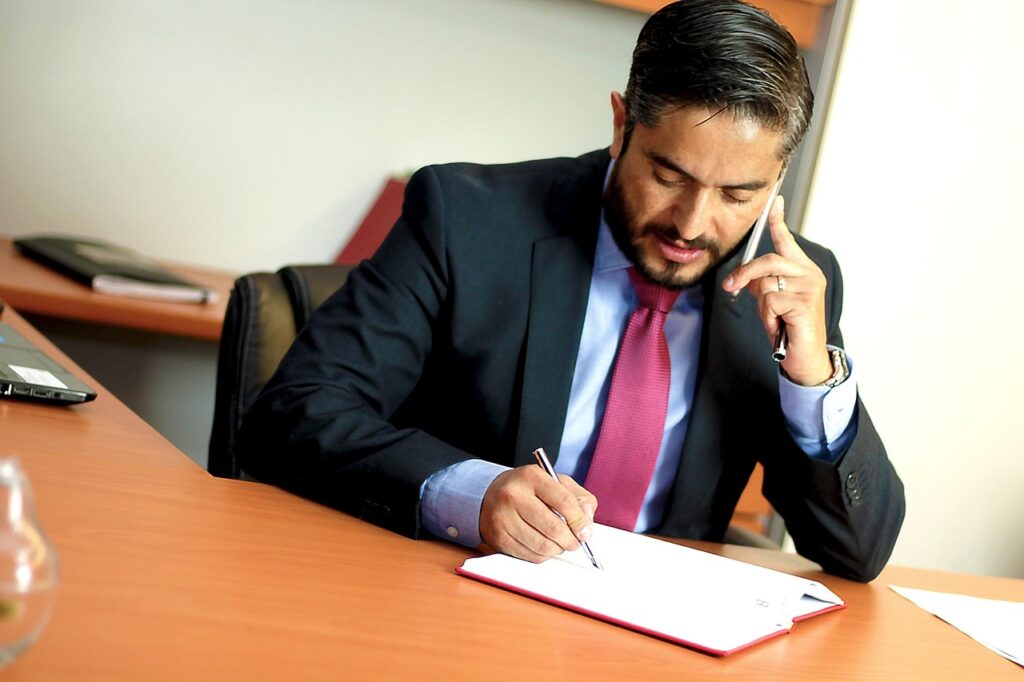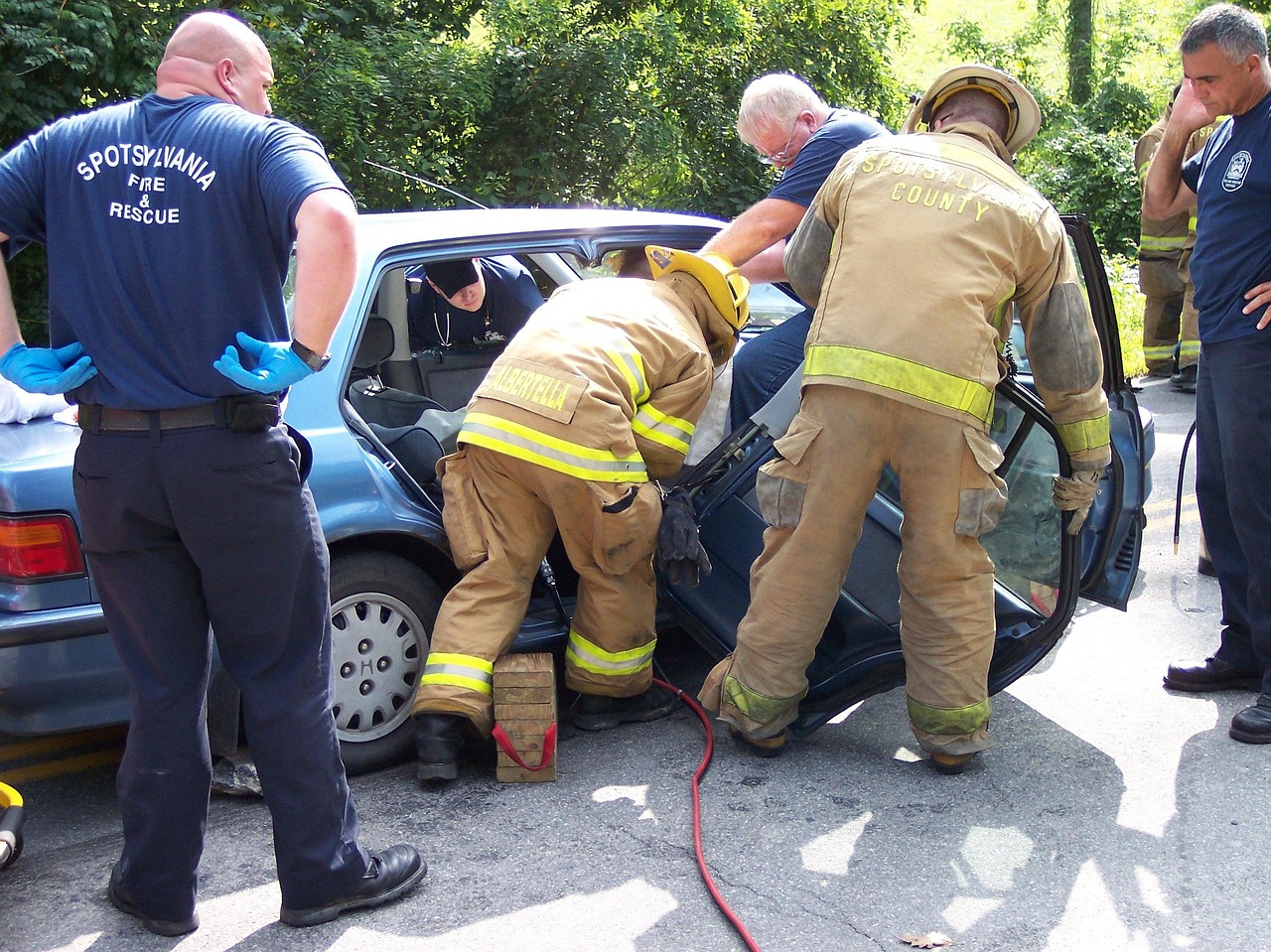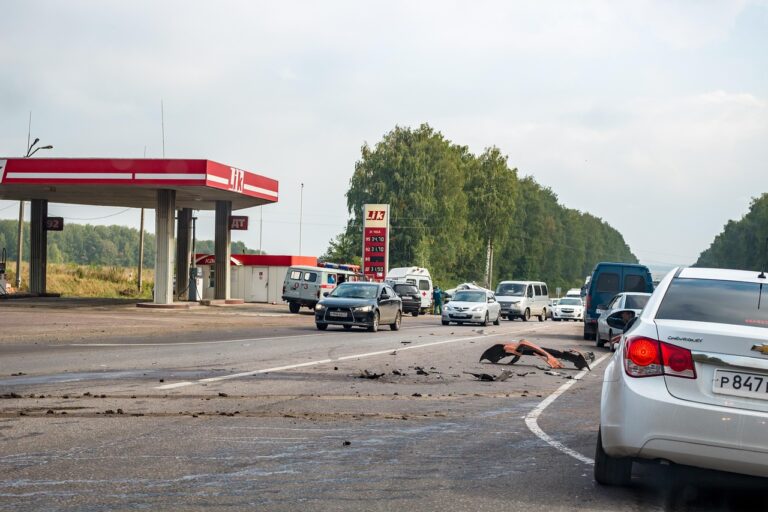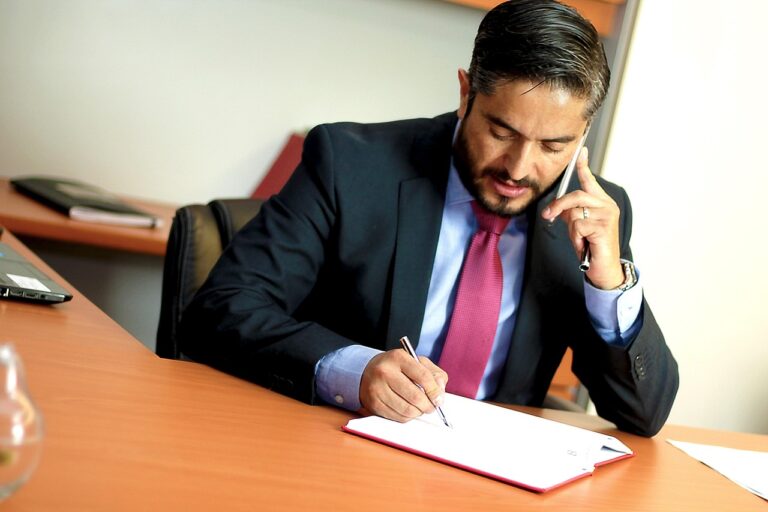What After a Car Accident
Navigating the aftermath of a car accident can be a complex and stressful process. From immediate actions like ensuring safety and gathering information, to more prolonged tasks like dealing with insurance claims, seeking medical attention, and dealing with possible legal implications – each step presents its own challenges. As we delve deeper into this topic, we will explore strategies to streamline these tasks and resources available to support accident victims. This discussion aims to equip individuals with the knowledge to handle such situations efficiently and effectively, while also considering the emotional recovery process that often follows a traumatic incident.
Assessing the Immediate Accident Scene
In the immediate aftermath of a car accident, comprehensively assessing the situation is of paramount importance. The initial evaluation process begins with ensuring scene safety. This involves taking necessary precautions to prevent further incidents, such as setting up flares or hazard lights to alert other motorists of the accident.
Next, a thorough accident evaluation is conducted. This includes examining the extent of vehicle damage, the number of vehicles involved, and the apparent severity of any injuries. It is also crucial to identify any potential hazards such as leaking fluids, broken glass, or combustible materials. A comprehensive account of the accident scene can provide valuable information for subsequent investigations.
Additionally, consideration should be given to the immediate environment. Factors such as road conditions, weather, and visibility can play significant roles in accident circumstances. In certain situations, it may also be necessary to evaluate the impact of the accident on traffic flow and take appropriate measures to manage this.
Important Post-Accident Documentation
Upon the stabilization of the accident scene, the focus shifts to the crucial aspect of post-accident documentation. This involves the systematic gathering of all pertinent information at the scene, and the timely communication of these details to your insurance provider. A detailed and accurate documentation not only expedites the claim process but also serves as a vital tool in any legal proceedings that may ensue.
Gathering Necessary Information
After the shock of a car accident subsides, your immediate attention should pivot towards gathering necessary information. This process, although potentially stressful, is crucial to ensure a smooth resolution of any claims or disputes that may arise.
The first step in gathering information post-accident is to collect witness statements. Witnesses can provide an objective account of the incident, which can be invaluable in reconstructing the sequence of events. It’s important to note down their contact details for further clarification or for use in potential legal proceedings. Additionally, taking photos of the scene is essential to support your claim, and understanding the right way to take pictures after a crash can greatly enhance the accuracy of your evidence.
Simultaneously, you should document in detail the vehicle details. This encompasses not only your own vehicle but also the other party’s. Information such as the make, model, color, and license plate number is crucial. Additionally, if possible, take note of the car’s condition, focusing on any existing damage that was not caused by the accident. Photos can be a powerful tool in this regard, providing visual evidence to accompany the written details.
Reporting to Insurance
Often, the next critical step after a car accident is reporting the incident to your insurance company. This process involves providing precise details about the accident, and any minor discrepancy could lead to accusations of insurance fraud. Thus, it is essential to report the truth to the claim adjuster, thereby ensuring a smooth process.
In the face of such a situation, documentation becomes crucial. The table below provides a list of important documents and their relevance in the process:
| Document | Relevance |
|---|---|
| Accident Report | Official record of the accident |
| Medical Records | Evidence of injuries and treatment |
| Vehicle Damage Photos | Visual proof of the damage |
| Witness Statements | Third-party perspective on the accident |
| Police Report | Legal record of the incident |
These documents help establish the circumstances surrounding the accident and the resultant damage, which assists the claim adjuster in determining the validity of your claim. Therefore, accurate reporting to your insurance company is not just about avoiding insurance fraud; it’s about ensuring a fair assessment of the incident and the subsequent claim. Remember, honesty and proper documentation are the keys to a successful claim settlement.

Navigating Insurance Claims
Navigating insurance claims post-accident can be a complex process, but understanding it thoroughly is crucial. This involves three critical steps: understanding your insurance coverage, reporting the accident promptly, and successfully settling insurance claims. Each of these steps will be analysed in detail to provide a comprehensive guide on effectively managing the insurance claim process after a car accident.
Understanding Your Insurance Coverage
A substantial number of motorists often underestimate the complexity involved in understanding their insurance coverage, especially when navigating insurance claims after a car accident. Grasping the details of your coverage types, including liability coverage, collision coverage, and comprehensive insurance is crucial.
| Coverage Type | Involves | Policy Limits |
|---|---|---|
| Liability Coverage | Personal injury and damage caused to others | Depends on policy |
| Collision Coverage | Damage to your vehicle in an accident | Up to vehicle’s current value |
| Comprehensive Insurance | Non-collision damage (theft, fire, natural disasters) | Up to vehicle’s current value |
Each type has varying deductible options impacting premium adjustments. Your policy limits, the maximum amount your insurance will pay following a loss, are integral in this understanding.
Being well-informed about the claims process can help you navigate complexities more efficiently. It’s crucial to know if your policy covers uninsured motorists, as this can significantly affect the aftermath of an accident. Finally, understanding your insurance coverage helps you prepare for potential financial implications and aids in making informed decisions about claims and premium adjustments. Therefore, it’s always recommended to fully comprehend your coverage aspects and consult with your insurance provider for any ambiguities.
Reporting the Accident Promptly
The aftermath of a car accident can be a tumultuous time, making it all the more important to report the incident to your insurance provider promptly. Failure to do so can result in complications with your claim and may even impact your coverage.
The accident timeline is a crucial aspect of your report. This includes the time and date the accident occurred, as well as the sequence of events leading up to, during, and after the accident. A detailed account not only aids in your insurer’s investigation but also assists in establishing liability, which is fundamental in the claim settlement process. To gain a clearer understanding of the essential steps to take after a collision, consider navigating the aftermath of a car crash, where you can find practical guidance on handling the situation efficiently.
In addition, police involvement is an integral part of the accident timeline. If law enforcement officers were present at the scene, it’s necessary to include their response in your report. A police report provides an unbiased third-party account of the incident, which can be beneficial in clarifying any disputes or discrepancies that may arise during the insurance claim process.
Settling Insurance Claims Successfully
Upon timely reporting of the accident and the subsequent compilation of a detailed accident timeline, one then faces the complex task of settling the insurance claim. This process involves several steps, from understanding your coverage to claim negotiation with your insurer.
The first stage in this process is policy interpretation. Here, one should scrutinize their insurance policy to ascertain the type and extent of coverage it provides. Knowledge of policy terms and conditions, including any exclusions or limitations, is crucial. This understanding forms the basis for any discussions or negotiations with the insurance company.
Claim negotiation is the next step. It is a dialogue between you and your insurer to determine the amount of compensation that you will receive. This can be a complex and contentious process, requiring careful preparation and a clear understanding of the facts surrounding the accident. One must be ready to present all necessary documents, including police reports, medical bills, and proof of lost earnings. It is advisable to have a legal professional guide you through this process, to increase your chances of a successful claim negotiation.
Always remember, the ultimate goal is to achieve a fair settlement that fully compensifies for all losses incurred due to the accident.
Understanding Legal Implications
After experiencing a car accident, one might find themselves tangled in a web of legal implications. Understanding these complexities is crucial as it influences the course of litigation and settlement. The first step usually involves liability determination. This process entails an analytical assessment of the accident to ascertain who is at fault. It requires a detailed examination of accident reports, witness testimonies, and sometimes, expert opinions.
A clear determination of liability can significantly impact the financial and legal outcomes of the accident. It might decide whether an individual will receive compensation or bear the financial burden of the accident. In unclear or disputed cases, the input of legal professionals becomes indispensable.
Legal representation is another critical aspect of navigating post-accident legalities. Hiring a lawyer who specializes in motor vehicle accidents can be highly beneficial. These professionals are well-versed in navigating the often convoluted legal landscape surrounding car accidents. They can negotiate with insurance companies, represent you in court, if necessary, and provide advice during settlement discussions.
A clear understanding of these legal implications can help individuals navigate the aftermath of a car accident more effectively. It can also ensure that their rights are protected, and the best possible outcomes are achieved.
Seeking Medical Attention
While understanding the legal implications post-accident is significant, it is equally important to prioritize one’s health by seeking immediate medical attention. This step is not only vital for your well-being, but it also plays a crucial role in documenting the extent of any injuries, which might be required for insurance or legal purposes.
Even if you believe your injuries are minor, it’s advisable to visit an urgent care facility. This is because symptoms of some severe conditions like internal bleeding or concussion may not be immediately apparent. Remember, the adrenaline rush post-accident can mask pain, leading to a delay in identifying serious injuries.
The medical evaluation doesn’t end with the initial visit. Follow up appointments are equally crucial. Not all injuries heal at the same rate, and some might require additional treatment or therapy. Regular follow-ups allow healthcare providers to monitor your recovery and make necessary adjustments to the treatment plan.
Repairing or Replacing Your Vehicle
Navigating the process of vehicle repair or replacement is the next crucial step following a car accident. Cost considerations factor heavily in this decision. Insurance estimates should guide you on the economical viability of repairs compared to the current market and salvage value of your vehicle.
Analyzing vehicle options becomes essential when leaning towards replacement. Do remember to factor in the value depreciation of new cars and the potential benefits of certified used vehicles. Replacement benefits extend beyond the immediate acquisition of a working vehicle. They include the assurance of a problem-free vehicle, potentially with factory or extended warranty coverage, which might not be the case with repaired vehicles.
Repair timelines are another critical aspect influencing the decision. Time taken to source aftermarket parts and complete the repair job could leave you without a vehicle for an extended period. This calls for a detailed cost-benefit analysis, factoring in potential rental costs or the inconvenience of being without private transport.
Warranty implications should also be considered when opting for repairs. Using aftermarket parts for repair might void existing warranties on your vehicle, thereby influencing future repair or maintenance costs. Thus, the process involves thorough analysis and careful decision making.
Emotional Recovery and Moving Forward
The aftermath of a car accident often leaves one’s emotional health in a state of significant turmoil. Navigating through the maze of feelings, from shock and anger to guilt and anxiety, can be a daunting task. It’s essential to acknowledge these feelings as part of the healing journey.
Using effective coping strategies can be instrumental in the process. This could include seeking professional help such as therapy, being open and honest about your feelings, and leaning on your support system. Emotional support plays a crucial role in recovery. Loved ones can provide comfort, encouragement, and a safe space to express feelings.
To further illustrate, consider the below table:
| Coping Strategy | Description | Benefits |
|---|---|---|
| Therapy | Seeking professional help to guide emotional recovery | Can provide tools to manage anxiety, guilt, and other emotions |
| Emotional openness | Expressing feelings instead of bottling them up | Prevents emotional buildup and promotes healing |
| Emotional support from loved ones | Leaning on friends and family for comfort | Provides a safe space to express feelings and fosters a sense of belonging |
Frequently Asked Questions
How Can I Manage Stress and Anxiety After a Car Accident?
Managing stress and anxiety post-incident involves seeking emotional support from professionals or loved ones, and employing coping strategies such as meditation, regular exercise, and maintaining a balanced diet to ensure overall well-being.
What to Do if My Job Performance Is Affected After a Car Accident?
Is your job performance suffering post-accident? Engage in open dialogue with your employer about workplace accommodations. Effective communication strategies can facilitate understanding and lead to adjustments that improve your productivity and comfort at work.
How to Talk to Children About the Car Accident?
When discussing a car accident with children, use age-appropriate talking techniques. Provide emotional support, reassurance strategies, and safety reminders. Practice active listening skills to understand their feelings and concerns, addressing them patiently and empathetically.
What if I Cant Afford a New Car After a Total Loss?
If you cannot afford a new car post-total loss, explore insurance options. Some policies cover replacement costs. Additionally, consider financial assistance programs or loans designed for individuals facing such unexpected circumstances.
How to Deal With Traumatic Flashbacks of the Accident?
Approximately 9% of accident survivors experience PTSD. Recognizing flashback triggers is crucial. Utilize coping techniques such as grounding exercises, deep breathing, and professional therapy to manage traumatic flashbacks following an accident.





